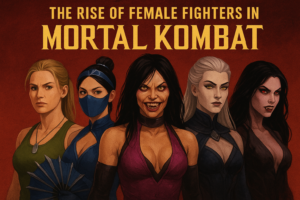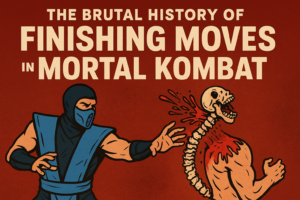
What really matters?

When it comes to fighting games, tier lists often stir up heated debates. Mortal Kombat 1 (MK1) is no exception. With iconic characters returning and new ones entering the fray, players are constantly analyzing which fighters rise to the top and which are considered “low tier.” But do tier lists truly matter in Mortal Kombat 1? Can they be the difference between victory and defeat, or is it more about skill and adaptability?
In this blog post, we’ll explore whether tier lists play a significant role in MK1, dive into the perspectives of top-tier players like SonicFox, and assess how tier rankings influence the competitive scene.
What Are Tier Lists?
Tier lists rank characters based on their perceived strength, effectiveness, and viability in competitive play. Typically, characters are grouped from S-tier (the strongest) to D-tier (the weakest), with rankings based on various factors such as move sets, damage potential, speed, and versatility.
While tier lists are often created by high-level players and community members, they are inherently subjective. Different players have unique playstyles, and what works for one may not work for another. Additionally, tier lists can evolve as new strategies emerge and developers release balance patches.
Here’s an example:
Why Tier Lists Matter in Mortal Kombat
For competitive players, tier lists can act as a guideline for choosing the best possible character for tournaments. In Mortal Kombat 1, understanding the strengths and weaknesses of each character is crucial, especially when you consider the game’s reliance on zoning, footsies, and combo chains. If a certain character has better tools for controlling space or dealing damage, they are more likely to rank higher on a tier list.
Popular players like SonicFox, known for their incredible versatility and dominance in the fighting game community, often discuss tier lists as a way to navigate competition. SonicFox, who is one of the most famous players in Mortal Kombat history, has frequently used characters ranked high on tier lists to devastating effect in tournaments. However, what makes SonicFox stand out is not just their reliance on “top-tier” characters but their ability to master a wide range of fighters, even ones ranked lower.
SonicFox’s Perspective on Tier Lists

SonicFox has often spoken about tier lists being important, but not the be-all and end-all of success in Mortal Kombat. In fact, they have famously beaten opponents with characters that many consider low-tier. In MK11, for example, SonicFox picked characters like The Joker and Sheeva, who were not initially seen as top-tier, but they dominated tournaments with them, proving that player skill and matchup knowledge often outweigh tier rankings.
In Mortal Kombat 1, SonicFox continues to show that while tier lists can help players understand character potential, true mastery comes from deep knowledge of the game mechanics, adapting to opponents, and exploiting the strengths of the character you’re most comfortable with.
SonicFox’s success with a wide variety of characters illustrates that tier lists are just one piece of the puzzle in competitive play.
Skill vs. Tier Lists: What Really Matters?
When it comes to Mortal Kombat 1, tier lists can give you insight into character strengths and weaknesses, but they shouldn’t dictate your gameplay entirely. Many factors play into a successful match:
- Player Skill: Mastering movement, zoning, combos, and punishing mistakes is essential, regardless of the character you choose.
- Matchups: Some low-tier characters may have favorable matchups against high-tier characters due to specific abilities or counters.
- Adaptability: Being able to read your opponent and adjust your strategy on the fly can make or break a fight, regardless of tiers.
Ultimately, tiers matter more at the highest levels of play, where players are looking to squeeze out every competitive advantage. However, for the vast majority of players, personal preference and skill matter more than where your favorite character ranks on a tier list.
Do Tier Lists Stagnate Creativity?
Another concern with tier lists is that they may stifle creativity among players. If the community focuses solely on top-tier characters, we could see a lack of diversity in tournaments. Characters labeled as low-tier might be overlooked, even though they could be viable with the right strategy.
One of the beauties of Mortal Kombat is the wide array of characters and styles that players can experiment with. Low-tier characters often hide hidden potential, and the fighting game community is always innovating with new techniques that can shift the meta.
Conclusion: Do Tier Lists Matter in MK1?
Yes, tier lists matter—especially in the competitive scene where every edge counts. But they are far from the final word on success. Mortal Kombat 1 is a game of skill, strategy, and adaptability. Players like SonicFox demonstrate that while a character’s ranking on a tier list can be important, player talent, matchup knowledge, and versatility are far more critical factors.
Whether you’re a casual player or aiming for the top of the competitive ladder, tier lists should serve as a guide, not a rulebook. Choose the character you feel most comfortable with, practice relentlessly, and focus on improving your overall gameplay. That’s what truly matters in Mortal Kombat.



